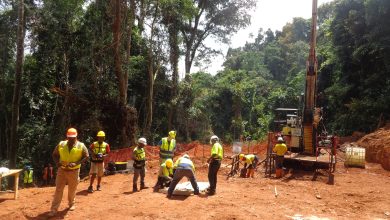
Outsourced compliance solutions for mining projects
Integrated Compliance Data, Informed Decisions
The volume of data to be collected and collated across a mining company for compiling compliance reports is immense and requires dedicated resources.
LILI NUPEN, Director and Co-founder of Johannesburg-based NSDV, fields question from MINING BUSINESS AFRICA on how a fully integrated approach can enable mining companies to manage this challenge effectively. Recently, NSDV, the mining-oriented law firm, launched a Mineral Right Management service dedicated to managing disparate compliance requirements.
MBA: What are the inherent limitations of consultants solely relying on the conventional approach (non-ESG integrated) to assess the level of compliance with mining rights (mining licence)? Specifically, what critical areas may be overlooked?
LN: Mining by its very nature is a multi-faceted process and venture. However, in most instances, we find that all these facets are interlinked. For example, from a regulatory perspective, proper environmental management is closely linked to social obligations around host communities’ access to a clean environment.
There are at least fourteen pieces of legislation that touch on mining operations directly in South Africa. Having a non-integrated approach to compliance management may lead to overlooking certain compliance areas and creating a lack of appreciation of the full impact the mining operations are having on the environment and all stakeholders. This would undoubtedly create risks for mining companies which will remain largely unknown until they materialise and cannot be mitigated until it’s too late.
MBA: How does obligatory ESG reporting impact mining companies’ ability to achieve compliance?
LN: The lack of enforcement of set standards leads companies to inconsistent disclosure and need or desire to report. Sadly, there are no legislated consequences for such non-reporting or non-disclosure.
MBA: In particular, what are some of the common challenges that are being encountered?
LN: Two main challenges are encountered. The volume of data to be collected and collated across the company is immense and requires dedicated resources. Also, the ability to report against multiple standards (local, national, international, voluntary) can be hampered if underlying data is not accurately tracked.
MBA: Despite the increase in regulatory burdens, some mining companies may be inclined to stick to the old ways of simple reporting, mainly due to the perception that it is cheaper and less onerous. What can you tell them about the merits of outsourcing compliance and reporting?
LN: By having all the underlying data used in reporting up-to-date, accurate reporting not only serves as a compliance solution, but as a commercial tool which can identify risks upfront and save costs. To any mining company, the mining right is the crown jewel of the operation. It must be protected at all costs because without it, there is no mining operation, no winning of minerals and most importantly, no profit.
In the legal profession, it is common for lawyers to provide reactionary services as opposed to preventative advice. In providing reactionary services, the non-compliance has already occurred and now a regulator is seeking to revoke or suspend a mining right (the crown jewel). In certain instances, these non-compliances can be rectified and the mining right saved. However, this is often a long, protracted and costly process.
Thus, to avoid any threats to the security of tenure of the mining right, mining companies should be focused on preventing non-compliances at the root. Proper compliance management and preventative services may eliminate the risk of losing the mining right altogether or having its operations suspended which ultimately affects the company’s bottom line and operations. NSDV’s outsourced Mineral Right Management compliance management system does just that.
It must be kept in mind that non-compliance may also be a criminal offence. In these instances, asking for permission or preventing non-compliance from occurring is always better than begging for forgiveness when a fine is imposed or a warrant of arrest is issued.
MBA: You have devised a Mineral Management Service for clientele in the mining sector. Concisely, share with us the scope of the areas that this involves? And the significance of each step or area?
LN: Our Mineral Rights Management product is implemented in phases. The first phase is the audit phase (very similar to those accountants that hover around your offices towards the end of the financial year). The purpose of this phase is to audit the current level of legal compliance.
Due diligence is done of all licences, rights, permits and authorisations issued to the mining company against all the relevant statutory obligations applicable to such mining company. It must be kept in mind that not all mines are built equal. Every mine is different and every mine is unique with its own set of unique regulatory obligations depending on several factors such as the location of the operation (environmentally sensitive or not), the type of mining being undertaken (open cast/underground) and the type of mineral being mined. At the end of this phase, a typical mining company would receive two documents.
The first document is a compliance audit report which will indicate the current level of compliance as well as provide high-level solutions to rectify any non-compliances identified. The second document would be a complete compliance register outlining all the statutory obligations imposed on the mining company which it is required to comply with and by when.
At the end of this phase, we move on to the second phase which essentially involves monitoring and oversight. For every compliance obligation identified in the compliance register, responsible people at mining operations would be constantly informed about their compliance obligations timeously allowing them to ensure that nothing falls through the cracks.
The benefit of having a law firm assist with such compliance monitoring is that lawyers are usually the first to know about any new legislation or regulation which has been published or which is imminent. In this regard, we can assist companies with planning for such amendments to ensure operations are and remain compliant.
MBA: Your approach entails, where applicable, WhatsApp, Phone and driving to a mine and engaging with management or regulators. Explain to mining management how is this more effective than a solid paper trail?
LN: What’s that old expression, “you get more bees with honey than with vinegar”? This is a principle with which we approach any issues faced by our mining clients. Look, the reality of operating in South Africa (or any third world jurisdiction) is that despite your best efforts, sometimes litigation (i.e. having a solid paper trail) is unavoidable, although the last resort, and with that, we are always ready to fight for our clients. This is why NSDV has an extensive dispute resolution department.
However, our initial approach is always to try and amicably and reasonably resolve any dispute with the regulator in person. We all know that litigation is expensive and time-consuming and while you may win the battle, in all likelihood you will lose the war. When various stakeholders come together and talk, we find that issues often resolve themselves effectively. We are all people at the end of the day with similar objectives…to do our jobs and look after our interests. We challenge you to try and understand the other party’s interests and how best to align them with your own and it will take you far!
MBA: What can you tell management of mining companies who may think that the compliance solution may be the burden itself, given the meticulous process involved?
LN: It may seem overwhelming, but that is why we are here. We will guide you through the process, we will pick up the slack and we will ensure proper implementation of the meticulous and fairly onerous process. Furthermore, once the initial phase is over and the mineral rights management system is up and running, it should secure compliance with very minimal impact or disruption to the day-to-day operations.
On the whole, having a fully integrated approach would mean that at all times a mining company would have access to all necessary compliance information. This would allow mining companies to make informed decisions in relation to all aspects of the operation in the most effective and efficient manner from a social and operational perspective.






